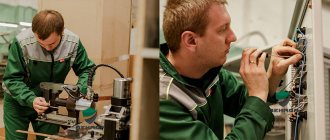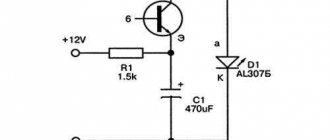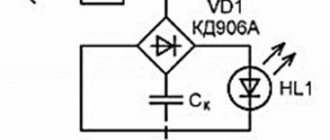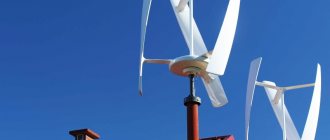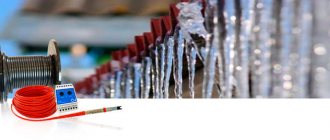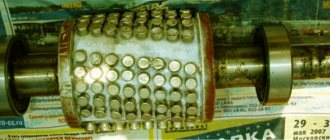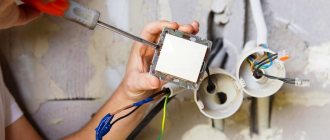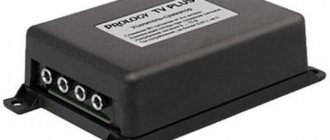The undeniable benefits of a wind generator
After viewing numerous photos of a homemade wind generator, individuals interested in the work are faced with the question of how practical a stationary installation will be.
The design can act as an additional and permanent source of electricity.
Thanks to the functioning of the device, it will be possible to operate such devices as:
- Lamps.
- Heating equipment.
- Household appliances.
- Boilers.
Schemes that require the presence of a battery have proven themselves to be excellent; it accumulates a resource if there is no need to supply the building at the moment.
Important! To implement high-quality heating of the entire building area, it is enough to create a structure with a power rating of 4 kW.
About homemade windmills for home
Particular interest in wind energy is manifested at the household level. This is understandable if you glance at the next bill for consumed energy. Therefore, all kinds of craftsmen are becoming more active, using all the possibilities of obtaining electricity inexpensively.
One of these possibilities, quite real, is closely related to a windmill from a car generator. A ready-made device - a car generator - just needs to be equipped with correctly made blades in order to be able to remove some value of electrical energy from the generator terminals.
True, it will work effectively only if there is windy weather.
An example from the practice of domestic use of wind generators. A well-developed and quite effective practical windmill design. A three-bladed propeller is installed, which is rare for household devices
The use of virtually any automobile generator is acceptable for constructing a windmill. But they usually try to choose a powerful model for the job, capable of delivering high currents. Here, the design of generators from trucks, large passenger buses, tractors, etc. is at the peak of popularity.
In addition to the generator, to manufacture a windmill you will need a number of components:
- two- or three-blade propeller;
- car battery;
- electrical cable;
- mast, support elements, fasteners.
The design of the propeller with two or three blades is considered the most optimal for a classic wind generator. But a household project is often far from an engineering classic. Therefore, most often they try to select ready-made screws for a home structure.
An impeller from a car fan that will be used as a propeller for a home wind turbine. Lightness and large useful area for air force allow the use of such options
This, for example, could be an impeller from an external unit of a split air conditioning system or from a fan of the same car. But when you want to follow the traditions of constructing wind generators, you will have to build the windmill propeller from start to finish with your own hands.
Before deciding to assemble and install a wind generator, it is worth assessing the climatic data of the site and calculating the payback. The information in this very interesting article, which we recommend you read, will provide significant assistance in this regard.
Generator selection
Before moving on to the actual work of constructing the model, taking into account step-by-step instructions on how to make a wind generator, you will need to decide on the main driving element.
The heart of the entire system can be chosen at your discretion; such details as:
- Tractor generator.
- Component from a PC or computer.
- Motor from car wipers.
- Elements from an old washing machine.
If you wish, you can buy a factory model in a specialized store, but you won’t be able to save your family’s budget as much as possible without scrap materials.
Other possible options
To make a mini wind generator, you can use any electric motors from household appliances. You can adapt the motor from a tape drive mechanism, from an old microwave oven (fan), and different options for brush designs. All of them have low power and will not be able to provide any serious devices, but as trial models created together with children and giving experience and understanding of the process, all of these options are quite suitable.
Based on the knowledge and skills gained, a more productive wind generator can be created that can meet the needs of a private home and transfer it to an autonomous power supply mode.
Frame preparation
The design of wind generators includes rotating parts; looking at them from the side, you can see the similarity of the prefabricated element with a windmill.
To create blades, several types of materials are used; you need to choose the most durable and easy-to-manipulate type of rigidity.
Of the components available to every owner, it is worth highlighting:
- Plywood.
- Plastic.
- Metal.
- PVC.
When considering the future dimensions of a model that you assemble yourself, you must also take into account the wind strength in the region of residence, the number of blades, and the height of the mounting fasteners.
List of required materials
In addition to an old cooler of relatively large size, for work you will need:
- thick plastic bottle;
- wire designed to operate under low voltage;
- small wooden block 1.5 inches in diameter;
- metal tubes that fit into one another;
- epoxy and superglue;
- unnecessary CD;
- tightening clamps.
All of the above can be easily found in your home pantry or purchased at the nearest market.
Making a mast
To lift and fix the main structure to a certain place, you will need to create a stable mast.
For its manufacture, a metal pipe, channel or corners are often used.
- Wooden elements will not be able to last long enough even after treating the surface of the parts with special liquids; the strength will also be low.
- It is not necessary to weld workpieces at the installation stage, because special equipment for this purpose may not be available.
- Often, all frame parts are assembled using nuts and bolts, as well as other equally practical fasteners.
DIY mini wind generator
The size of a wind generator does not necessarily have to amaze the imagination with its grandeur. A small installation made from small improvised parts or devices is also capable of generating current. It can be used as a teaching aid for children, a light source for emergencies, a mobile phone battery charger, etc.
The cost of small wind generators with a power of 750 W ranges from 35,000 rubles only for a wind turbine and from 115,000 for a complete set. At the same time, such a device will not be able to provide energy to the entire house, which makes the purchase of such a structure questionable from the point of view of rationality. It’s another matter if the windmill is assembled independently.
Costs are reduced tenfold, and the efficiency is the same as what was envisioned when the project was created. A mini-wind generator can serve as a trial model to test the technology and gain some experience in creating such devices. For manufacturing, you can use various small motors from failed or outdated equipment.
Process Tool
When choosing the strongest and most durable material, such as metal, you need to worry about personal protective equipment; gloves, safety glasses and long sleeves will be essential.
When cutting workpieces with a power tool, it is better to securely fasten the pieces of metal in a vice; small elements should be adjusted with special scissors so that the product looks neat. Screwdrivers, keys, tape measure, square and marker are prepared in advance so that when you start implementing your plans, you will be less distracted from the process.
Use of wind power generators at home
Based on the above factors, the question arises: why not install a windmill in every house? The answer consists of two main points:
- Price. The cost of devices with sufficient power is very high. For example, the cost of a unit with a power of 2 kW and a voltage of 24 V ranges from 75,000 rubles;
- The average wind force in most regions does not reach 4 m/s.
Map of average annual wind speed in Russia
That is, the use of wind turbines as the main source of energy is irrational. In a standard house, with the simultaneous operation of all household appliances, up to 1 kW per hour is consumed, and when operating powerful power tools, this figure increases, increasing the required voltage in the network.
To ensure uninterrupted power supply, you will need at least: a combination of three wind turbines of 3 kW, or one with a capacity of at least 10 kW; several batteries of sufficient capacity; reliable controller and inverter.
Installation of the entire system will cost at least 400,000 rubles, and with variable wind speeds, this method of power supply loses its relevance.
A clear example of a circuit with a high power device
It is advisable to use self-assembled 220-volt windmills as an alternative source of energy. In combination with solar panels, a fuel generator of sufficient power or a central power grid.
Important! If there is a combination of sources, it is necessary to include in the ATS system (automatic switching on of backup power). This device controls the supply of energy by changing the power source.
Diagram of a wind turbine and city power supply
Electrical system using three sources
Model from a car generator
There are several fundamentally important points regarding the assembly of this type of device. To achieve good efficiency of the device, you need to remake the generator and equip it with permanent magnets.
The driving elements should be created taking into account the power of the motor; if the workpieces are very heavy, then the wind generator may jam at low speeds. A large-diameter pipe made of duralumin is ideal for constructing blades; this material is characterized by high durability.
The fastener must be as reliable as possible, this concerns not only the tightening components, but also the racks, their rigidity is adjusted according to the load of the device.
Advice! It is difficult to do without preliminary balancing of the blades; to lighten some parts of the structure, you can use sandpaper or a grinder with a grinding wheel.
Windmill from a stepper motor from a printer
Stepper motors are capable of delivering 12 volts or more, but their current strength is low. The design does not allow strengthening their windings, so they are used as is. Blades of the appropriate size, made from polypropylene sewer pipes, are installed on the shaft. You will need to assemble a simple rectifier. Conventional stepper motors, in theory, are capable of charging a mobile phone battery in a couple of days, but in practice this is very difficult to achieve; they can be used for illumination using LED flashlights.
Expert recommendations
Only those individuals who thoroughly understand electrical engineering should undertake independent work, and also adhere to specially designed diagrams.
- The choice of power source is no less important than the purchase of materials for the frame; alternating current generators and asynchronous motors have proven themselves to be excellent.
- When organizing a place for installation, several nuances should be taken into account; the support must fully correspond to the load, especially if the device is located on the roof of a building.
- After performing the manipulations, different masters obtained units weighing from 200 to 800 kg, quite weighty samples.
- On the ground, it is better to fill the platform with concrete so that when there are gusts of wind, the structure will not be torn out; it is attached to a dense and stable base.
Neodymium magnets have high performance indicators; such elements are often used in wind generators; maximum care must be taken when working with them. When thinking about the shape of the finished product, it is better to choose a round or rectangular type of moving part.
Device for charging a car battery
A small wind generator that can charge a car battery is a very practical and necessary device. It is necessary to ensure a voltage that does not exceed the battery rating (usually 12 V), otherwise there is a risk of overcharging and boiling of the battery.
As a generator, you will need a homemade device of appropriate power or a ready-made asynchronous motor, tractor or car generator capable of creating a charge voltage. To protect against overcharging, you will need a controller based on a car relay-regulator that turns off the charge when the voltage is too high.
Photo of a homemade 220V wind generator
Installation of supporting structure and blades
When building a vertical windmill for a home with your own hands, special attention is paid to the base of the entire structure, since the unit itself should be raised as high as possible above the ground. This will require more serious financial investments, but the energy saved will pay for these costs over time. The higher the structure, the higher the wind speed, therefore, for a device with large dimensions and weight, preparation of the foundation is required.
This installation requires thorough strengthening and a reliable foundation.
The blades of any type of device should be mounted at a certain angle, both for vertical and horizontal devices.
The location of the blades on a horizontal unit
Drawing of the direction of the blades of a vertical device. The blades of a small device are made of plastic. It’s obvious that you made it with your own hands.
Important! In stormy winds, the operation of wind turbines is not recommended, as the blades may not withstand heavy loads. Provide a means of emergency rotor stop in your design.
Feasibility of purchase: prices of wind generators for a private home
The cost of wind turbines for private homes is quite high. The cost of purchasing equipment will only pay off if the area has suitable conditions.
Installation of a wind power plant is justified in the following cases:
- the terrain meets the equipment requirements;
- the region in which the site is located is characterized by strong winds;
- there is no possibility of using other alternative sources of electrical energy.
In other cases, the cost of purchasing a wind generator for your home will not pay off. If the number of windy days per year is small, these devices can be supplemented with solar panels or generators running on diesel or gasoline.
Depending on the type of structure, wind generators can be vertical or horizontal
How to increase the profitability of a wind turbine for a private home
Coastal areas, as well as open areas in mountainous areas, are ideal for installing wind equipment. In these regions, the wind speed is more than 60-70 m/s. Residents of these areas can completely abandon central power supply systems and switch to wind power plants. In flat areas, wind flows are more uniform, but their strength is not enough to fully provide the house with electricity.
It is highly undesirable to install equipment near forests and plantings. Trees will retain some of the energy, which will reduce the profitability of wind turbines. The power of the air flow increases with distance from the ground. This means that the higher the wind farm mast, the greater the impulse the device can capture. On the other hand, an excessively high structure requires additional reinforcement. It will be easier for strong gusts of wind to knock it down than wind turbines with a mast that reaches 5-7 m.
Experts recommend installing equipment at a height of 10-15 m from the ground. There are two ways to secure such a structure:
- By concreting the base.
- Using metal guy wires.
The most effective way to generate electricity is considered to be a combination of a windmill and solar panels.
To concrete the base of the windmill, you will need to dig four deep wells with a small diameter. The mast guy wires are immersed in them, after which they are filled with cement mortar. This process is quite labor-intensive and expensive, but it is highly reliable. Even with strong gusts of wind, the mast will remain motionless. The only risk is that the blades break.
Fixing the mast with guy wires involves using a metal cable. It is pulled until the windmill is positioned strictly perpendicular to the surface of the earth. After this, the cable extensions are securely fixed in the ground.
Important! Wind turbines with high masts need to be grounded.
Which is the best wind generator to buy for your home: manufacturers and cost
The choice of a wind power plant must be approached carefully. The main criteria are the power of the equipment, the type of axis (horizontal or vertical), and the manufacturer. Before purchasing, you must carefully study the technical specifications and compare products from different manufacturers.
Prices for Russian-made wind generators:
| Manufacturer | Price, thousand rubles |
| Wind energy company | 30-300 |
| Rkraft | 65-908 |
| Wind power | 78-130 |
| Sapsan-Energy | 149-319 |
| GRC-Vertical | 204-600 |
Many of these organizations are engaged in the production of equipment for individual orders, and also provide assistance in design and calculations.
The prices of foreign-made wind turbines for homes are much higher. The minimum cost of installations is 120 thousand rubles. The products of foreign companies are distinguished by a high level of quality due to the use of high-tech equipment in production. However, repairing such installations will be expensive, and purchasing spare parts may be difficult.
The cost of a Russian-made factory wind turbine can vary between 30-600 thousand rubles.
Advantages of factory-made wind turbines:
- the opportunity to purchase a complete device and even order its professional installation;
- a wide selection of manufacturers and modifications with different characteristics;
- quality assurance;
- the ability to call a qualified specialist to carry out repair work.
Taking into account the high cost of factory equipment, many owners of suburban areas prefer structures made by themselves. It takes about 3,000-5,000 rubles to make a homemade wind generator. Most of this amount is spent on purchasing a high-quality battery that can hold a charge for a long time.
Related article:
DIY solar panels: an affordable source of power supply
What is the device, the principle of its operation. Types of solar panels. Suitable for use in the garden and at home.
Advantages of self-made wind power plants:
- significant savings;
- when creating a homemade windmill, the designer will know all the features of its structure;
- the ability to make the main parts and blades for a wind generator with your own hands from scrap materials.
Homemade structures, unlike factory-made wind power plants, fail much more often.
Note! To install a factory structure, it is better to call a specialist. Otherwise, any error made during the installation process will void the warranty.
Homemade wind generator designs are inferior in quality and reliability to industrial models
The principle of operation of a wind generator and types of equipment
All wind turbines consist of a blade, turbine rotor, generator, generator axle, inverter and battery. All models can be roughly divided into industrial and home, but their operating principles will be the same.
Example of a purchased model diagram
Rotating, the rotor creates alternating current with three phases, which goes through the controller to the battery, and then, in the inverter, it is converted into stable current for supply to electrical appliances.
Simple operation scheme
The rotation of the blades occurs due to physical action using an impulse or lifting force, as a result of which the flywheel comes into action, as well as under the influence of a braking force. In the process, the flywheel begins to spin, and the rotor creates a magnetic field on the fixed part of the generator, after which the current is reproduced.
In general, wind generators are divided into vertical and horizontal. Which has to do with the location of the axis of rotation.
Vertical option
When planning to create a 220V windmill with your own hands, first of all think about the vertical options. Among them are:
- Savonius rotor. The simplest one, which appeared back in 1924. It is based on two half-cylinders on a vertical axis. Disadvantages include low use of wind energy.
Savonius rotor variant
- With Daria rotor. Appeared in 1931, spinning occurs due to the difference in resistance between the aerodynamic hump and the tape pocket, so the disadvantages include low torque, as well as the need to mount an odd number of blades.
A type of wind generator Daria
- Helicoidal. The blades have a twisted shape, reducing the load on the bearing and increasing service life. The disadvantage is the high price.
Helicoidal
Homemade version will be cheaper if it is properly thought out and installed.
Related article:
RCD: what is it? Have you ever heard the abbreviation RCD? You will find out what it is by reading the review to the end. Briefly, I would like to add that this device is capable of protecting housing and all its inhabitants from emergency situations related to electricity.
Horizontal models
Horizontal models are divided by the number of blades. They have higher efficiency, but there is a need to install a weather vane to constantly search for the direction of the wind. All models have high rotation speeds; instead of blades, a counterweight is mounted, which affects air resistance.
Option for horizontal models
Multi-blade models can have up to 50 blades with high inertia. They can be used to operate water pumps.
Wind generator for a private house: purpose and design features
Wind power plants for private homes are widely used as alternative sources of electrical energy to achieve savings. Often such devices are installed in summer cottages.
Wind generators are used as alternative sources of electrical energy
Most often they are used in areas remote from main power grids. However, this is far from the only reason in favor of buying a wind generator for a private home. Most land owners use these structures to achieve autonomy and savings.
Not every site is suitable for installing such devices, since not all conditions meet the requirements of this equipment. First of all, this concerns wind speed. In order for a wind power plant to function normally, the average wind speed must be at least 4-4.5 m/s. Only in this case will the installation of the structure be economically justified.
To find out the average annual wind speed, you can use a wind map. It reflects approximate data by region. More accurate indicators can be obtained using a special device - an anemometer, as well as a device for reading its signals.
Note! The device for measuring data must be installed very high, otherwise trees and buildings will distort the result.
For a windmill to operate efficiently, its installation area must be windy.
Operating principle and structure of a wind generator
A wind generator is a special type of equipment that converts the kinetic energy of the wind into mechanical energy. It drives the rotor blades mounted on the generator. As a result, alternating current is created in its windings. The generated electrical energy is stored in batteries, from where it is supplied to household appliances.
The described scheme of work is simplified. Of course, the design of a wind generator is much more complicated. There is also a controller in the energy chain. Its function is to convert three-phase alternating current into direct current. After which it goes to charge the batteries.
Most household appliances are not able to be powered by direct current. Therefore, an inverter is installed in the chain behind the battery. It converts direct current into alternating current, the voltage of which is 220V. All these operations take away part of the initial energy - approximately 15-20%.
The building can be powered not only from a wind power plant, but also from solar panels, as well as from a gasoline or diesel generator. If these elements are present in the chain, then the circuit is supplemented with another component - a circuit breaker. When the main current source is turned off, it starts the backup ones.
Wind generator operating principle
The wind power plant consists of the following components:
- a rotor with blades (depending on the features of the model, there may be several blades for a wind generator, usually 2 or 3, although there are also multi-blade options);
- a gearbox or gearbox that controls the speed between the generator and the rotor;
- a protective casing that protects structural parts from the negative influence of external factors;
- “tail”, ensuring the rotation of the structure following the direction of the wind;
- storage battery that stores a certain amount of energy;
- inverter installation that converts one type of current into another.
What kind of wind power plant can you buy: classification of equipment
There are several classifications according to which wind power plants are divided into groups:
- According to the direction of rotational movement of the blades, there are horizontal and vertical windmills.
- By the number of blades - two-, three- and multi-bladed devices.
- According to the type of material used for the production of blades - designs with sail and rigid blades.
- According to the control method - windmills with fixed or adjustable blade pitch.
Internal structure of a wind generator
Helpful advice! In most cases, experts recommend that country house owners buy a windmill with a fixed blade pitch, since adjustable devices are too difficult to operate.
A wind power plant with a horizontal axis is placed perpendicular to the air flow. The design has a similar structure and functions on the same principle as a conventional weather vane. Windmills with a rotary generator have high efficiency, and they are affordable. The operation of these devices is based on air flow resistance.
Vertical axis wind turbines, or orthogonal wind turbines, have a compact design, but their price is much higher. Thanks to the special structure, this type of equipment is completely independent of the wind direction. The blades have the appearance of turbines, which significantly reduces the load on the axial part. It would be advisable to buy a vertical wind generator in cases where the wind in the area constantly changes its direction.
Advantages and disadvantages of wind power plants for home
Like any other type of equipment, wind power plants have both advantages and disadvantages. To decide to buy this device, it is advisable to weigh its strengths and weaknesses.
The popularity of using wind power plants is due to a large number of advantages
Why is it profitable to buy a wind generator (220V) for a private home:
- There are no additional costs, since the device does not require fuel to operate.
- There is no need for constant monitoring. The structure generates electricity on its own every time the wind blows.
- A relatively silent and completely environmentally friendly way of generating electricity.
- The device can be used in almost any climatic conditions.
- Part wear is minimal.
Installing a wind generator for a home is accompanied by the following disadvantages:
- the cost of purchasing equipment pays off in 5-6 years;
- relatively low efficiency indicator, which is reflected in power;
- high price of wind generators;
- to compensate for the device’s inactivity on windless days, additional equipment is required: a generator and a storage battery (the cost of these elements is very high);
- in some modes, windmills for home use infrasounds (the same thing happens if the equipment is installed incorrectly);
- Regular preventative maintenance is required;
- a hurricane can seriously damage equipment.
Depending on the power of the device and the wind map of the area, a windmill can provide electricity to both a small country house and a large country cottage
Helpful advice! You definitely need to calculate the profitability before buying a wind generator for your home; the price of the equipment may be too high, and the cost of purchasing it will not pay off. To do this, you need to calculate the average power of the house (the power of all electrical appliances is taken into account), evaluate the area where the equipment will be installed, and find out the number of windy days per year.


